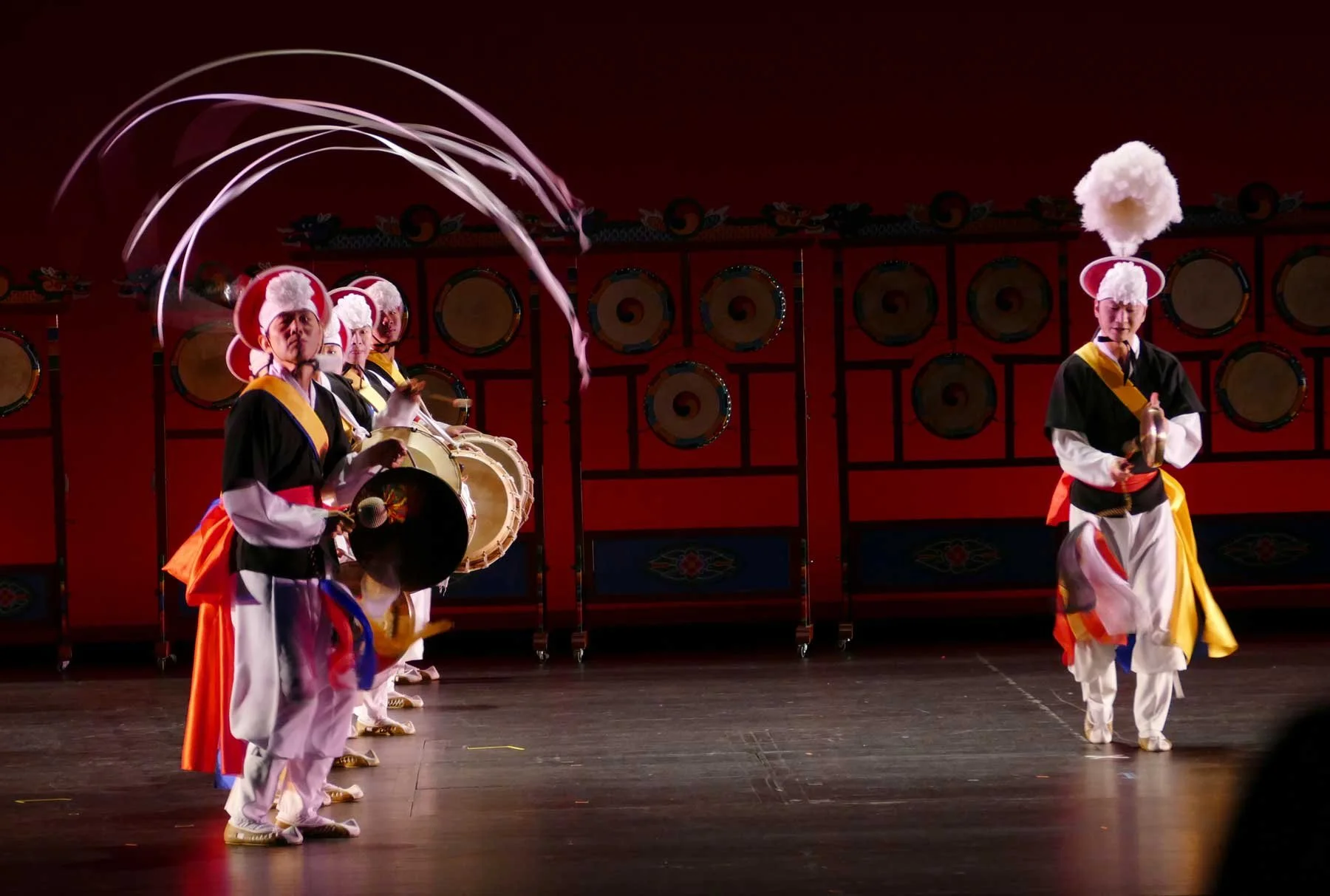pungmul and samulnori
Chicago, Illinois
All the pageantry and vibrant energy of a harvest festival in rural Korea comes together in the flying footwork, brilliantly colored dress, and joyful percussion of pungmul, breathtakingly presented by the master artists of the Korean Performing Arts Institute of Chicago.
Pungmul has long been central to celebrations in Korean farming communities where traditional agriculture was a communal undertaking. In most towns, musicians encouraged farmers in the fields, blessed crops, and entertained at festivals. Combining percussion, singing, and dance, pungmul is known for celebratory, hours-long performances. Skilled musicians and dancers propel the event, playing complex rhythms, creating mesmerizing, multicolored circular patterns with the long single ribbon on their sangmo hats, and performing thrilling acrobatic feats—but pungmul also made space for all to participate by joining the dance or tapping on a hand-held sogo drum. Pungmul served these festive and ritual functions for generations, and even took on political overtones when pro-democracy movements embraced it in the 1960s and 1970s.
Pungmul features four core instruments, representing sounds from the natural world as well as the balance between yin and yang that is central to Korean philosophies of natural and cultural harmony. Two skin drums are the yin instruments: the two-sided janggu hourglass drum represents the rain, while the buk, a barrel drum, represents the clouds’ movement. The yang instruments are both metal gongs: the deep-voiced jing plays the downbeat of the wind, while the hand-held kkwaenggwari brings the voice of the thunder and conducts the ensemble. These core instruments are accompanied by the taepyeongso, a Korean double-reed instrument in the oboe family. The performers’ attire is likewise symbolic: ribbons in the primary colors of red, blue, and yellow adorn white costumes with black vests, representing the five cardinal directions (north, south, east, west, and center) and nature’s five essential elements (wood, fire, earth, metal, and water).
As Korea’s economy modernized and became more urban, pungmul performance opportunities waned, but a strong popular enthusiasm remained with its 1966 recognition as Important Intangible Cultural Property of Korea. In 1978 a group of musicians took pungmul’s instruments and developed samulnori—literally “the play of four instruments.” Samulnori highlights and intensifies the beautiful, complex percussion, creating a modernized pungmul style for the stage.
The Korean Performing Arts Institute of Chicago (KPAC) was founded in 2013 by Chicago-based educator, arts administrator, and percussionist Byoung Kim to carry forward these Korean traditions. KPAC has a mission to pass on Korean musical heritage to the next generation, particularly through its award-winning youth percussion program SoriBeat. KPAC brings master artists from South Korea to teach, and its current cohort is putting down roots in Chicago and bringing unparalleled pungmul to American audiences. Folk music education has recently become professionalized in Korea, and these five master artists—Chansoo Lee, Deokhwan Kim, Sungjae Lee, Yun Sil Jang, and KPAC’s Artistic Director Suwan Choi—have honed their craft with the highest level of training from middle school through conservatory-level degrees. Also joining them on stage are executive director and founder Kim, and ethnomusicologist and advanced apprentice Gina Choi. Together, the seven musicians of this exceptional performing ensemble invite you to experience the brilliant pageantry of pungmul and the dynamic complexity of samulnori at the Richmond Folk Festival.


